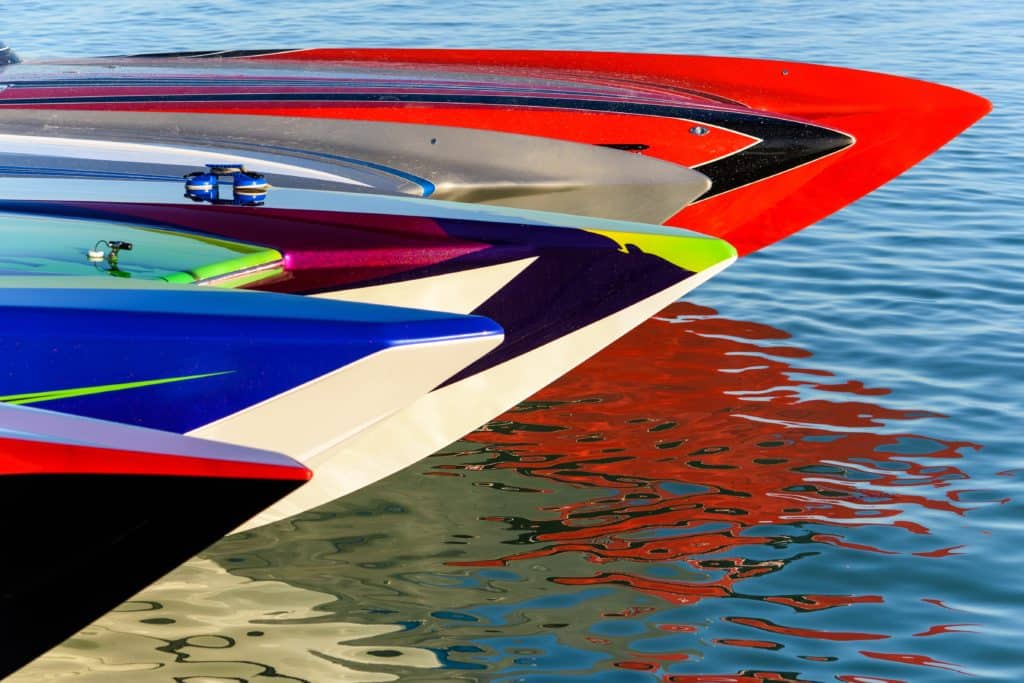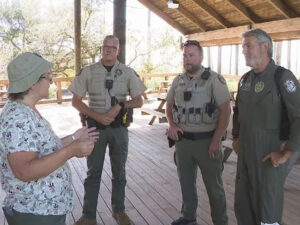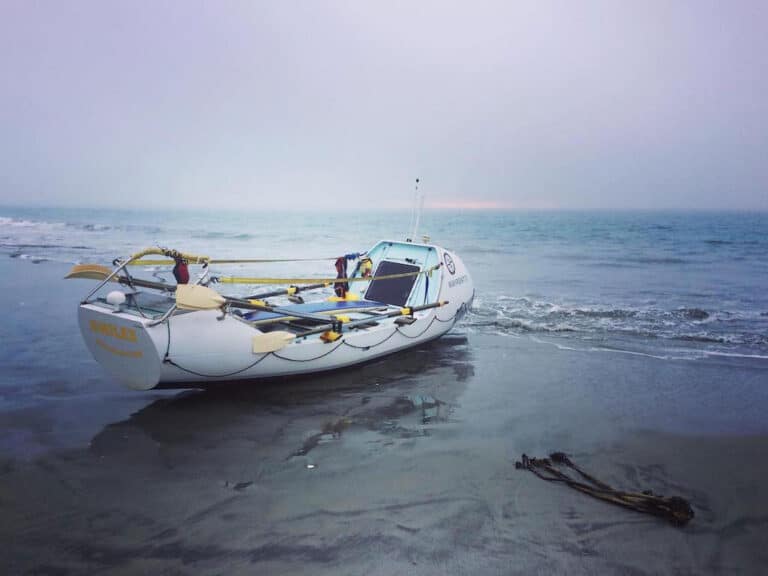
Performance boaters sometimes get a bad rap, accused of being on-water menaces. But today’s go-fast boaters are more cerebral, more competitive and even a bit humbler — less likely to think they know it all. With speed, they know, comes responsibility.
So some go to school on speed. Performance driving schools are popping onto plane, nationwide. Manufacturers such as Donzi Marine run some, fine-tuned to their own boats; others, such as Tres Martin’s Performance Boat School, are independent, with courses geared toward specific boat types: performance, center-console performance, high performance, ultra performance, sport-yacht performance, and even government service training.
Boating magazine editor-at-large Randy Vance got the opportunity to observe both Donzi’s and Martin’s schools, on Lake Havasu along the California/Arizona border, and collected insights to share.
Vance met a man who wanted to learn how to get the most from a newly acquired twin-engine catamaran, as well as a husband-wife team in which the wife was tired of taking the back seat and wanted to acquire the boat-handling skills her family’s catamaran required.
School’s not cheap: Martin’s classes, one to one-and-a-half days long, begin at $1,800. But it’s a sound investment — and a smallish one compared with the cost of a performance boat and its feeding and care. A diploma might get you an insurance discount. And, this school’s a lot of high-speed fun!
Vance came back from performance-boat college with a notebook full of high-speed tips. Here’s a fast sample:
Speed 101: Turning
Consider first the “hull truth.” A boat hull’s design has profound handling impacts, so pick a school that specializes in yours.
Some say V-bottoms, for example, can’t safely turn at speeds above 70 mph, while other experts say it can be done with proper setup and captaining. Cats, of course, are just-plain fast, and as nimble as their namesakes. Vance said one cat-pupil learned to dance across the waves at 105 mph.
Come turn time, begin by “setting up”: After head-checking for other traffic, ease back the throttle. Your fuel will move forward, settling your bow a bit deeper in the water for a secure-turn bite. And when you advance the throttle, the reverse occurs, helping you complete the turn.
Martin told his students to place their hands on the helm at 3 and 9 o’clock positions, then rock the helm 180 degrees, then return to center, repeatedly. (You eventually might adjust the arc for the performance of your boat.) Vance reported all three students were soon making smooth-but-aggressive turns at 50 to 70 mph.
Another approach? Donzi’s instructor advised a similar slow-down and head-check, then a half-turn of the helm with a little throttle boost. For a sharper turn, add a bit of throttle.
Martin taught his class this tip for high-speed turns, in any boat: Monitor your tach because the first hint of instability will be one tachometer racing ahead of the other, or a single tach’s needle bouncing sharply upward, as the steady flow of water to the prop is interrupted by turbulence and the now-less-burdened engine revs. Pay attention — things are beginning to come unglued.
In a multiengine boat, watch each engine’s tach. In a stepped monohull, the engine inside the turn is most apt to lose its bite; on a catamaran, the reverse is true.
And if a turn’s going bad? Don’t back off the throttle. (“Even a PWC rider,” says Vance, “can tell you that the quickest ticket to instability is to suddenly stop the engine.”) Straighten up the path instead. Get control, and only then ease back the speed, and next pause to think it all over.
You will, of course, get another turn!
Performance 102: Holding Steady
We don’t just turn all day, of course, and it’s important not to maintain too much speed in a steady course.
“Running at speed” isn’t about a specific, maximum mph; it’s running the right top speed for the conditions. That means you need to learn to read water.
What’s the state of the sea? Where’s the next turn or marker? Where are other boats, and what are they doing? Your aim is to resemble the slalom skier, who blends speed, turns and course conditions for a gold-medal run.
That skier, of course, learned through failure, and you’ll make mistakes too. Make sure they’re not safety errors — and whatever the blunder, learn from it.
Think About Enrolling
Golfers get coaching from pros. Singers study with vocal coaches. Up-and-coming managers learn from mentors. To shorten your performance-boating learning curve, and laugh off the inevitable mistakes in good company, consider going to school.
The U.S. Coast Guard is asking all boat owners and operators to help reduce fatalities, injuries, property damage, and associated healthcare costs related to recreational boating accidents by taking personal responsibility for their own safety and the safety of their passengers. Essential steps include: wearing a life jacket at all times and requiring passengers to do the same; never boating under the influence (BUI); successfully completing a boating safety course; and getting a Vessel Safety Check (VSC) annually from local U.S. Coast Guard Auxiliary, United States Power Squadrons(r), or your state boating agency’s Vessel Examiners. The U.S. Coast Guard reminds all boaters to “Boat Responsibly!” For more tips on boating safety, visit uscgboating.org.








